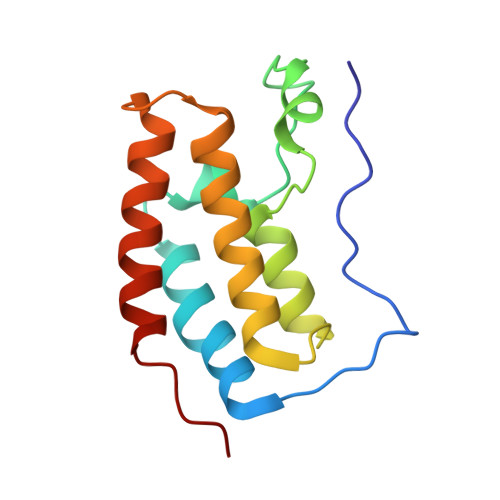Evaluating the Advantages of Using 3D-Enriched Fragments for Targeting BET Bromodomains.
Johnson, J.A., Nicolaou, C.A., Kirberger, S.E., Pandey, A.K., Hu, H., Pomerantz, W.C.K.(2019) ACS Med Chem Lett 10: 1648-1654
- PubMed: 31857841
- DOI: https://doi.org/10.1021/acsmedchemlett.9b00414
- Primary Citation of Related Structures:
6UVJ, 6UVM, 6UWX - PubMed Abstract:
Fragment-based ligand discovery has been successful in targeting diverse proteins. Despite drug-like molecules having more 3D character, traditional fragment libraries are largely composed of flat, aromatic fragments. The use of 3D-enriched fragments for enhancing library diversity is underexplored especially against protein-protein interactions. Here, we evaluate using 3D-enriched fragments against bromodomains. Bromodomains are highly ligandable, but selectivity remains challenging, particularly for bromodomain and extraterminal (BET) family bromodomains. We screened a 3D-enriched fragment library against BRD4(D1) via 1 H CPMG NMR with a protein-observed 19 F NMR secondary assay. The screen led to 29% of the hits that are selective over two related bromodomains, BRDT(D1) and BPTF, and the identification of underrepresented chemical bromodomain inhibitor scaffolds. Initial structure-activity relationship studies guided by X-ray crystallography led to a ligand-efficient thiazepane, with good selectivity and affinity for BET bromodomains. These results suggest that the incorporation of 3D-enriched fragments to increase library diversity can benefit bromodomain screening.
Organizational Affiliation:
Department of Chemistry, University of Minnesota, Minneapolis, Minnesota 55455, United States.



















